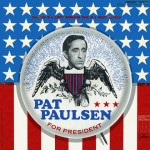Memories of my youth. Continue reading
About the only way that Nemaha County, KS, would make the news is if a tornado touched down there. That is what happened yesterday near the town of Corning. It must have been a pretty big storm; I heard about it on the radio. I was not surprised to learn that no one had been injured. Nemaha County is a pretty large place — over 719 square miles — and the total population is only a little over ten thousand, about half as densely settled as it was in 1900.
I have spent some time in Nemaha County. In the late 1950’s or early 1960’s my uncle, who was a priest of the Benedictine order, somehow got assigned as the pastor of St. Bede’s Church in Kelly, KS, which is about seven miles from Corning. The church is still there, I think, but according to the Internet it is “served” by a priest from another parish. I wonder what became of the rectory, the house next to the church, in which my uncle, officially Fr. Vincent, but Fr. Joe to all of my family, lived. I stayed with him for one week per summer for a few years. When I became too urbane and sophisticated for this, my sister took my place.
Having lived all of my life in either the city or the suburbs, I found Kelly to be an unusual place. It was as rural as it could be, certainly more rural than the only other farm town that I had ever heard of, Petticoat Junction. Despite the name, none of Kelly’s residents were Irish. All, or at least nearly all, of them were Germans. I heard my uncle explain once where the name Kelly came from, but I do not remember.
As I recall, “downtown” Kelly consisted of only two retail establishments, a combination gas station and post office and a feed store. I found it wonderfully strange that postmaster was a part-time job in Kelly. By the way, my uncle’s official address was, at least according to TheCatholicDirectory.com, 7344 Drought St. When I mailed letters to my uncle, I addressed them to “Fr. Vincent, Kelly, KS.” He assured me that that was more than sufficient, and he was right. I wonder whether he would have received it if I had erroneously sent one to 7346 Drought St. I am pretty certain that there were no houses on his “street” within a mile of the rectory, and, in fact, I cannot recall any dwellings at all.
The parish provided my uncle with a car, an old grey Buick (or maybe Pontiac) that he absolutely hated. One night we heard on the television news that someone had escaped from a nearby (by Kansas standards, within one hundred miles is definitely “nearby”) prison. Fr. Joe shocked me by unlocking the car and putting his keys in the ignition in hope that the fugitive would steal it.
Fr. Joe was a Renaissance man. He was an accomplished athlete and scholar. He had a degree in economics (!) from the University of Chicago. He was very adept at painting. He was well-versed in history, literature, and classical music. He loved to hunt and fish, although in his later years he did most of his hunting with his camera. I think that he loved to spend time in the outdoors with his dogs more than anything.
My uncle and I played golf together occasionally. We usually played at the golf course in the county seat, Seneca, a metroplex with a population of over one thousand. The public golf course there had several unique features. The first thing that one noticed was the lack of a clubhouse. Instead there was a metal box in which one inserted one’s brown (explained later) fees. The box also contained score cards on which the distances of each of the nine holes was recorded.
The small map on the scorecard made it clear that the holes were laid out in a more-or-less rectangular fashion around an out-of-bounds area in the middle of the course. That area looked like an abandoned field, but it was actually the landing strip for the Seneca airport. So, yes, during the round a plane might very well land or take off within a few yards of the course.
It goes without saying that the course was flat. My recollection is that there was a noticeable hill on either the seventh or eighth hole. This was only a slight impediment in late summer when it was so dry that the ball would routinely roll for an extra thirty or forty yards.

The most memorable feature of the course, however, did not come into play until one’s second shot on the first hole. At that point most golfers could see the flag, but there were none of the usual indications of a putting surface — short grass, elevation, sand traps, etc. Instead the hole was surrounded by a circle of perfectly level ground from which all vegetation had been removed and replaced with a coating of sand. When your ball reached the “green,” you picked it up and remembered where it was. You then took a metal rolling device and made a two-foot wide path from your ball to the hole. Then you putted on the dirt and sand. When you were finished, you used a rake to turn the green into something that a Japanese gardener would be proud of.
You have missed your chance to play on this unique course. Its greens were converted to grass while I was in college, and it is now closed. Someone built an 18-hole course a couple of miles out of town.






